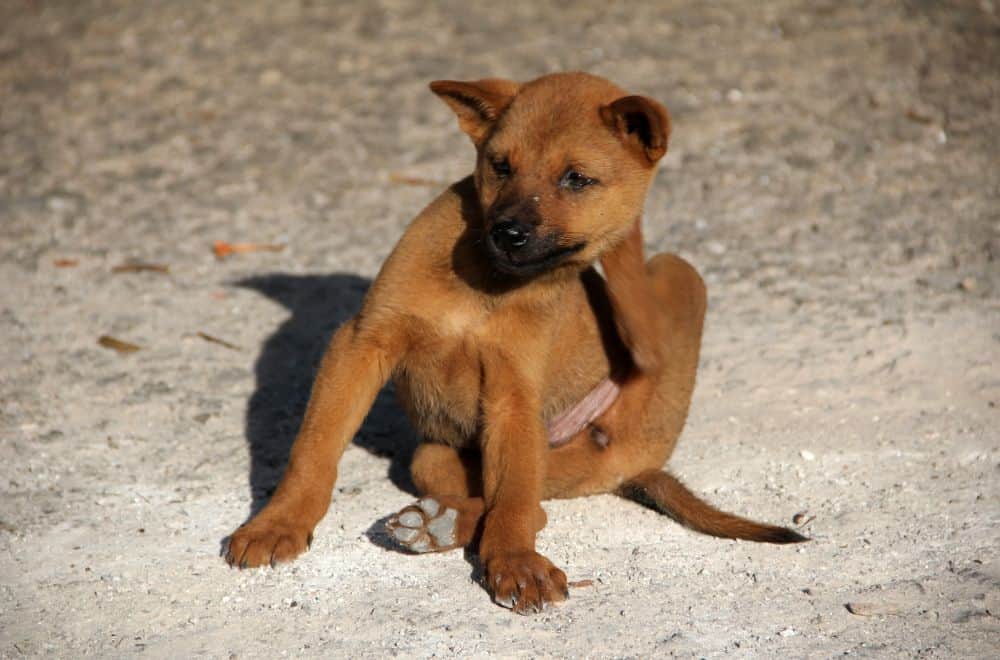If you have any pets, one thing you probably don’t ever want to see is a flea crawling around in their fur or their bedding – but if you do see a solitary flea, is it really such a big deal?
You might not imagine that one single flea is anything to get worked up about, but it’s certainly something you need to take notice of – and to help you understand why and explain what to do if it happens, in this post, we answer the question, is one flea a problem?
Is One Flea a Problem? – The short answer
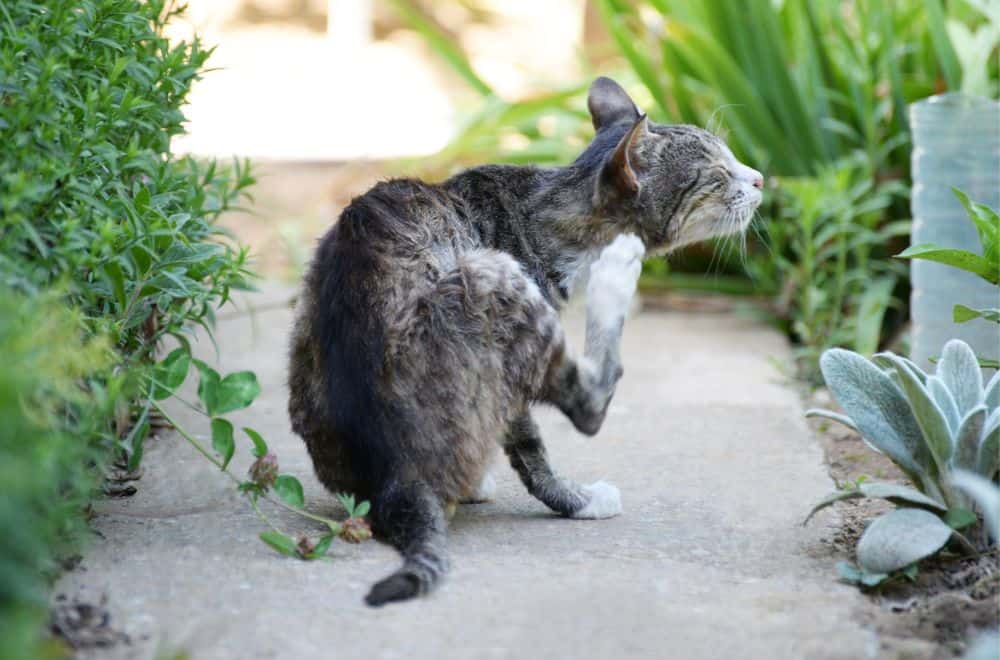
Before we go into detail, let’s start with the short answer.
Is it a problem if you see a single flea? In a word, yes.
Fleas are tiny insects, so if your pet is carrying a single flea, it’s highly improbable that you will happen to spot it – which means if you see one, it’s extremely likely that there are more with it.
Furthermore, even if you do happen to spot a single flea that your pet has picked up, if that one flea is a fertilized female, she will quickly lay eggs, eventually creating many more fleas.
The only way a single flea on a pet might not be a problem is if it is a male or an unmated female, and given how difficult it can be to rid yourself of a flea infestation once it has started, this is not a risk that’s worth taking.
In other words, if you see a single flea, you should assume there are more – and the quicker you take action, the easier it will be to resolve the problem.
In fact, the only time when a single flea shouldn’t worry you is if you don’t have pets – because a flea in an animal-free home won’t have a food source and won’t be able to breed, so it will quickly die along with any others that might be present.
Where do fleas come from?
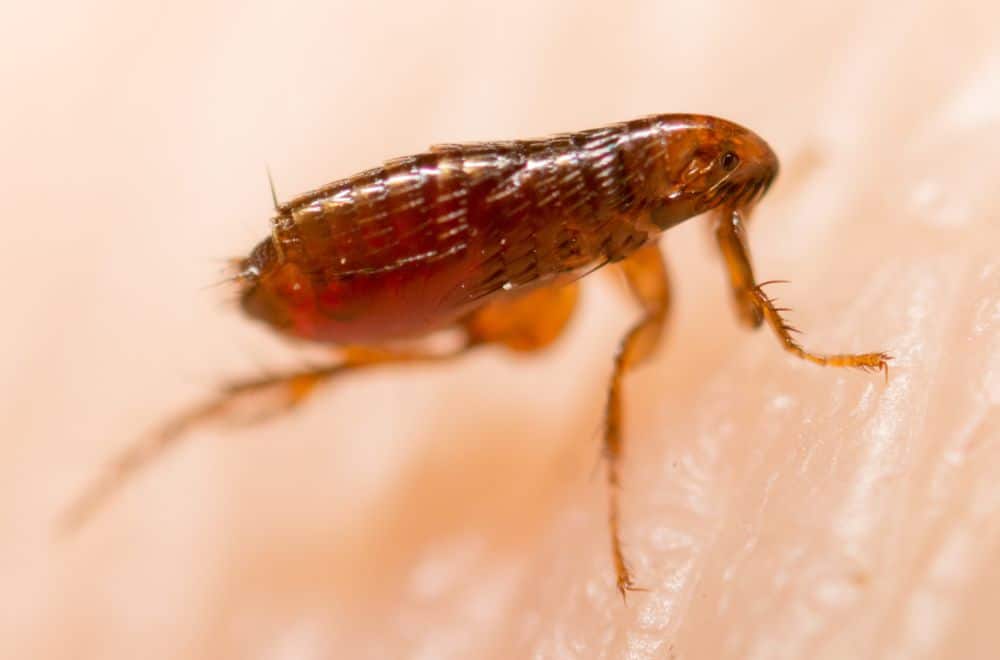
So where do fleas come from? And how do pets pick them up?
Most of the time, fleas don’t jump directly from one animal to another. Rather, newly developed adult fleas will leap onto a host animal when it passes close to them.
This means they will jump onto your pet if your pet goes anywhere other flea-infested animals have been and where flea eggs have dropped off of them.
This could mean the fleas come from other domestic animals – so for example, your dog could pick up fleas from the home of another dog owner – or the fleas could come from wild animals outside that have dropped flea eggs into the grass or elsewhere.
But to understand this more clearly – and to understand how infestations develop and why a single flea should most certainly be seen as a problem – we need to think a bit more about the lifecycle of fleas, so let’s do that now.
The lifecycle of a flea

The lifecycle of a flea starts with a mature female and a mature male. After finding a host, both males and females need to feed before mating. However, once they find a host, they will feed within an hour and will start breeding just 24 hours later.
After this, the female will begin laying eggs and can continue to do so for several days, with the number of eggs produced varying from a couple to a couple of dozen, depending on the flea species.
Some of these eggs will remain on the host animal while others will fall off. This means large numbers of flea eggs are likely to fall off and then hatch in places the animal spends lots of time – such as its bedding or even your bed or other furniture if it is allowed there.
Many eggs will also simply fall out into your carpet.
Next, the flea larvae will emerge from the eggs and will begin to feed on any organic material they find. After this, they will then pupate, going into cocoons as they metamorphose into adults.
Flea pupae are the hardest to kill, and fleas may stay in the pupa state for extended periods as they wait for an opportune moment to emerge as adults. This is part of the reason flea infestations are so hard to deal with.
Finally, when adult fleas emerge from their cocoons, they immediately seek a host so they can feed and then breed, beginning the cycle anew.
How to spot fleas
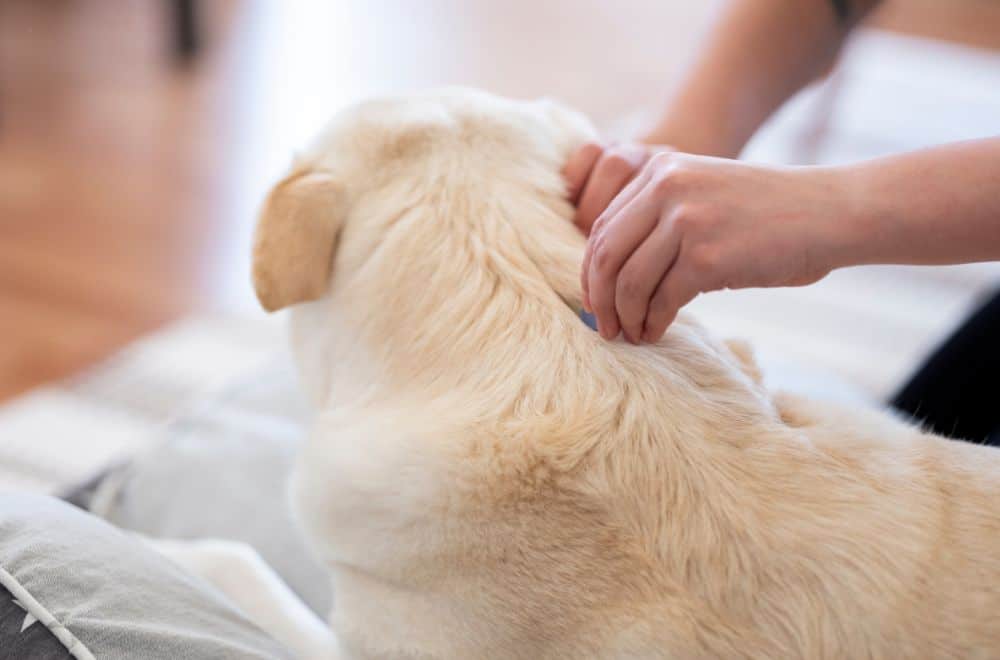
Fleas are tiny, and when hidden in your pet’s coat, they are hard to see – although you may occasionally see one crawling out of and then back into your animal’s fur if you’re “lucky”.
However, it’s much easier to spot fleas through the symptoms their presence causes.
Chief among these is seemingly unexplained, intense and prolonged scratching, particularly in the same areas. The scratching may also cause red areas of dermatitis and hair loss, which can also be another tell-tale sign that your animal is carrying fleas.
Something else to look out for is so-called flea dirt in places like your pet’s bedding. Flea dirt is the common name we give to flea feces and will turn a dark brown-red color in water.
If you take a magnifying glass to your animal’s bedding, you may also be able to find near-microscopic flea eggs, and you may also see what look like small white grains of rice. These will be tapeworms, a type of parasite that can hitch a ride on fleas.
What should you do if you see a flea on your pet?
If you see a flea or one of the other warning signs that fleas are present, you should start by combing your pet with a specialized flea comb. If one flea is present, this will usually turn up at least several more, confirming what you are dealing with.
The next step is to take your pet to see a vet, who will be able to recommend the most appropriate treatment and medication for your animal – and you should then start dealing with the infestation as soon as possible since any delay will only make things worse.
How to deal with a flea infestation
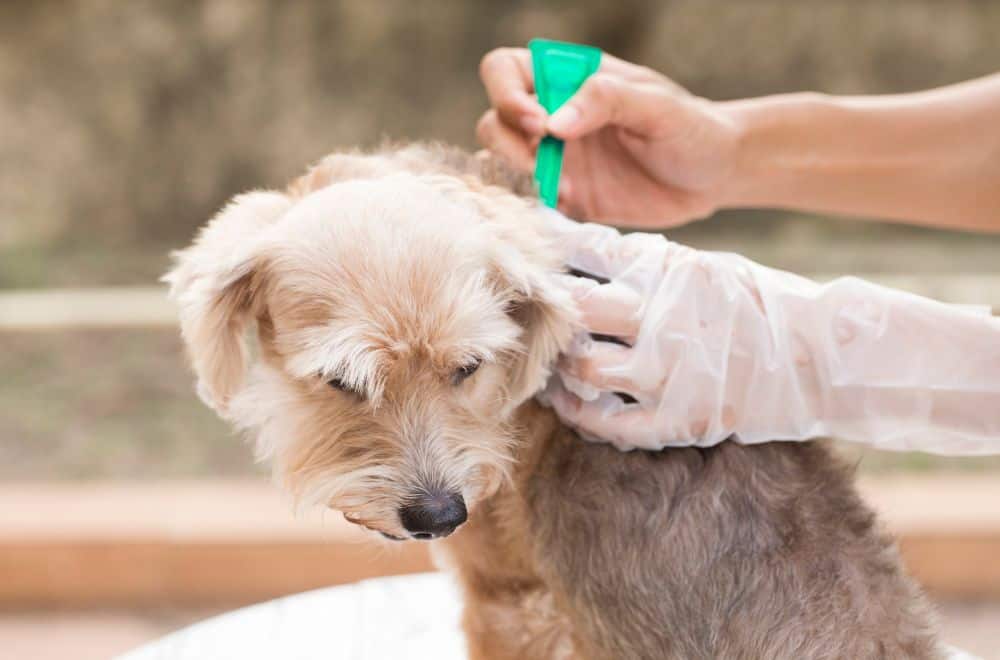
Having discussed the lifecycle of fleas and how they breed and lay eggs, it should now be obvious that a flea infestation can take some considerable time and effort to resolve.
This is because ending an infestation is not just a case of removing adults from your pet but also of killing the eggs, larvae, pupae and new adults that may also be present in your home.
If you don’t do this, the infestation will simply return, so you need to adopt a two-pronged line of attack, thoroughly cleaning both your pet and your home.
1. Treating your pet
There are several possibilities for treating your pet for fleas, and your vet will advise you on the best method to use.
For example, you can wash your pet with anti-flea shampoo, you can treat them with anti-flea medication in the form of pills, you can treat them with sprays or dips and you can fit them with flea collars.
Many of these methods not only kill the adult fleas but also prevent the eggs and pupae from hatching, helping to slow or halt the infestation.
Importantly, if you have more than one animal in your home, you should treat each one separately. This is because flea treatments for dogs are not usually suitable for cats, for example.
2. Cleaning your home
As well as removing fleas from your pets, you also need to remove all eggs, larvae, pupae and adult fleas from everywhere in your home – because potentially, even just a few surviving fleas will be able to breed, restarting the infestation.
Regular vacuuming will help clear all eggs and pupae from your carpets – and steam cleaning will also kill them since even pupae can’t resist these kinds of high temperatures.
You should also wash all bedding, both human and animal, at the highest temperatures possible. This needs to be repeated often over a period of weeks.
Alternatively, if the infestation is too serious, you may also consider throwing out your bedding and starting again.
Furniture also needs to be cleaned, and a combination of vacuuming, steam cleaning and washing can help. In more severe cases, flea powders or sprays that kill fleas at all stages of their lifecycle can also be considered.
The key to ridding yourself of a flea infestation is to be consistent with what you do over several weeks or even a month or two.
This way, you will kill or remove all of the fleas from your home at all stages of their development – but if you forget to do it, they can quickly return.
Other tips for reducing the intensity of a flea infestation
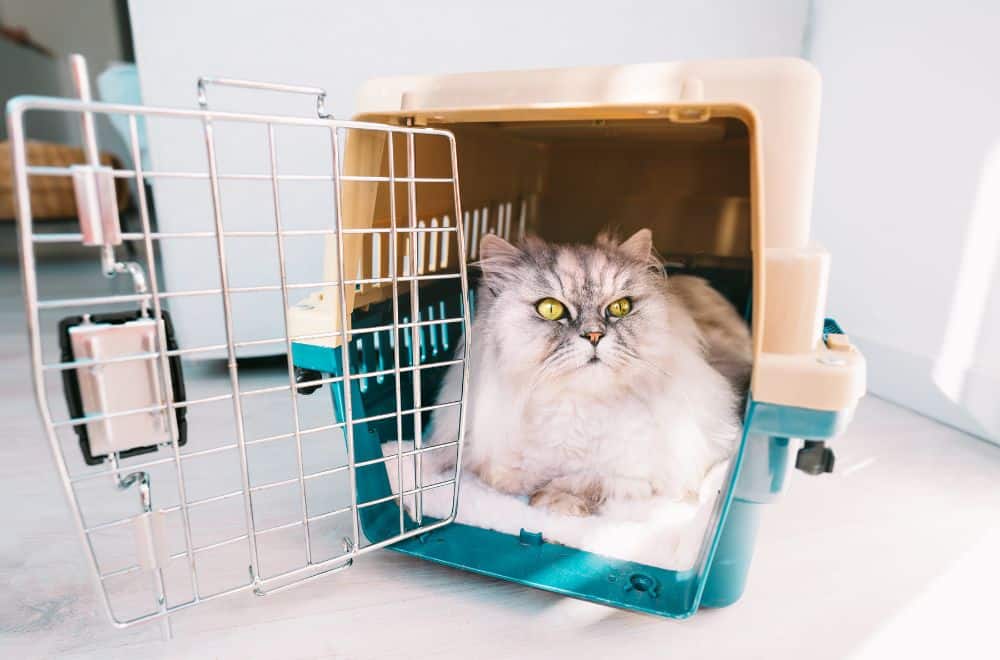
Here are a couple of other pointers for what to do to increase your chances of success while dealing with an infestation.
3. Keep animals inside
Since animals may pick up more fleas from going outside, it’s best to keep them inside as much as possible while you are dealing with a flea infestation.
4. Remove food and water sources for wild animals around your home
Wild animals may visit your yard at night, dropping more eggs onto the floor where your animals may pick up the new adults as they develop.
This means removing all sources of food and water from around your home will help discourage wild animals from stopping by and bringing in more fleas to infest your pets.
FAQ
How many fleas usually live on one animal?
Usually, the number of fleas living on a single animal is not so high, and an average of around 20 fleas is common.
However, some animals can carry up to 200-300 fleas, and in one extreme case, a dog in Spain was found to be carrying almost 1,000 fleas in its coat.
Are fleas dangerous to humans?
Fleas don’t usually feed on humans, and they aren’t usually considered dangerous. However, they can sometimes transmit disease.
For example, the Yersinia pestis bacterium is spread by the Oriental black rat flea and is responsible for bubonic plague, one of the deadliest diseases in human history.
Are fleas dangerous to pets?
Similarly, fleas are not considered especially dangerous to pets, although they can spread disease.
At the same time, they can transmit tapeworms, which can be more serious than the flea infestation itself.
When are fleas most active?
Fleas are most active in the spring and summer months when the warmer weather is more favorable for the development of flea larvae.
However, since our homes tend to be warm year-round, once fleas are present, they can breed consistently all year.
How can you prevent flea infestations?
If you want to prevent a flea infestation from occurring in the first place, you should keep up your pet’s preventative treatments such as pills or the use of a flea collar.
If you find one flea, it means the treatments are not working – or that you have forgotten to keep them up to date – and where there is one flea, there is sure to be another.
Similarly, try to keep your animals away from wild animals and the places where they may deposit flea eggs – although this may be easier said than done, especially with cats. This another reason it is so important to keep anti-flea treatments up to date.
Finally, if you see even one flea, you should act immediately since this will give you the best chance of nipping an infestation in the bud before it gets out of hand.
One flea can be a sign of a big problem to come
Having spoken about the way fleas breed and how difficult it can be to rid yourself of an infestation, it should now be quite obvious that even seeing a single flea on your furry friend should set alarm bells ringing.
If you do see a flea on your pet cat or dog, you should act quickly to prevent the infestation from spreading any further because that’s your best hope of catching the infestation before it becomes too serious.
